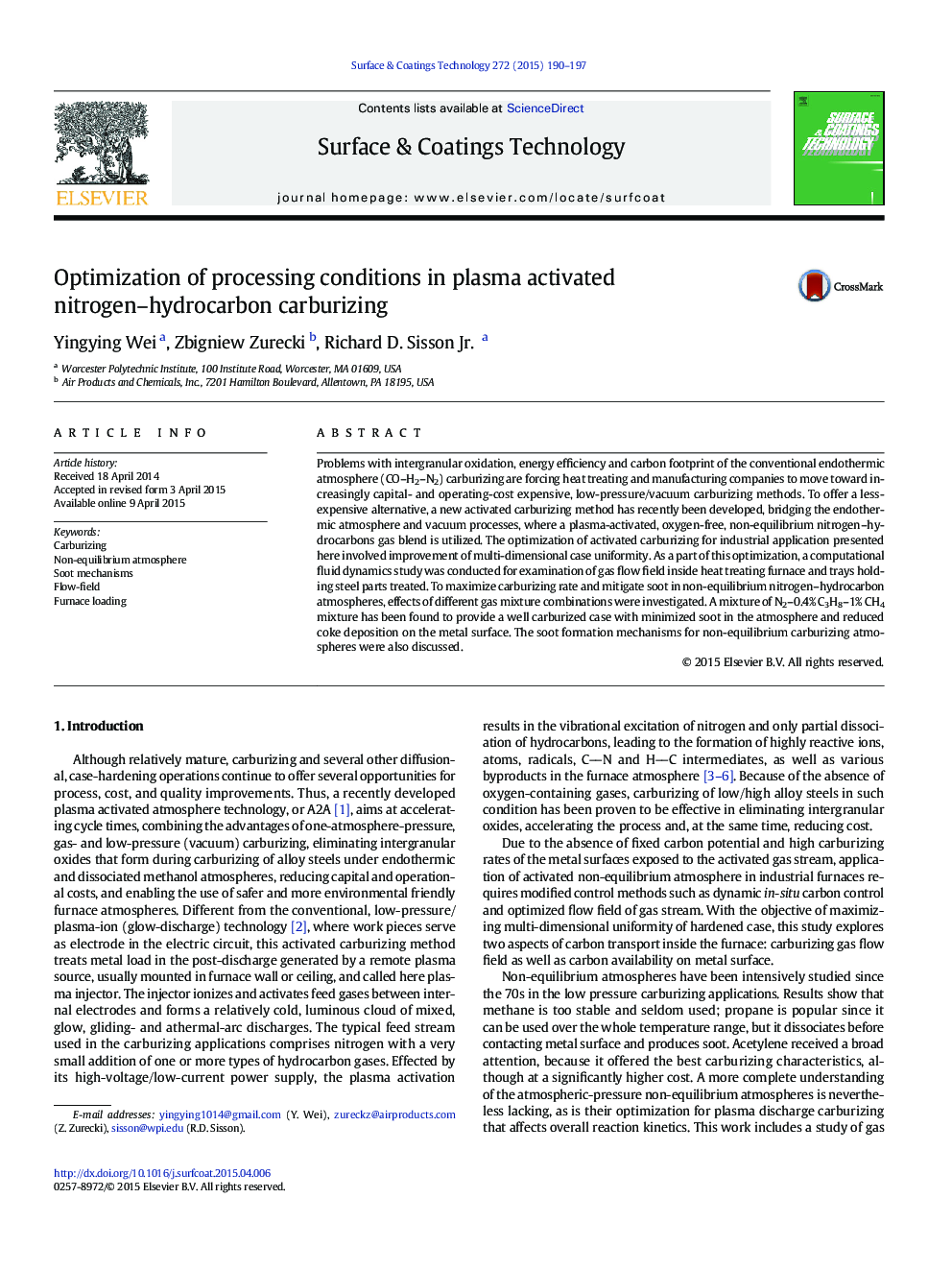| Article ID | Journal | Published Year | Pages | File Type |
|---|---|---|---|---|
| 8026525 | Surface and Coatings Technology | 2015 | 8 Pages |
Abstract
Problems with intergranular oxidation, energy efficiency and carbon footprint of the conventional endothermic atmosphere (CO-H2-N2) carburizing are forcing heat treating and manufacturing companies to move toward increasingly capital- and operating-cost expensive, low-pressure/vacuum carburizing methods. To offer a less-expensive alternative, a new activated carburizing method has recently been developed, bridging the endothermic atmosphere and vacuum processes, where a plasma-activated, oxygen-free, non-equilibrium nitrogen-hydrocarbons gas blend is utilized. The optimization of activated carburizing for industrial application presented here involved improvement of multi-dimensional case uniformity. As a part of this optimization, a computational fluid dynamics study was conducted for examination of gas flow field inside heat treating furnace and trays holding steel parts treated. To maximize carburizing rate and mitigate soot in non-equilibrium nitrogen-hydrocarbon atmospheres, effects of different gas mixture combinations were investigated. A mixture of N2-0.4% C3H8-1% CH4 mixture has been found to provide a well carburized case with minimized soot in the atmosphere and reduced coke deposition on the metal surface. The soot formation mechanisms for non-equilibrium carburizing atmospheres were also discussed.
Keywords
Related Topics
Physical Sciences and Engineering
Materials Science
Nanotechnology
Authors
Yingying Wei, Zbigniew Zurecki, Richard D. Jr.,
